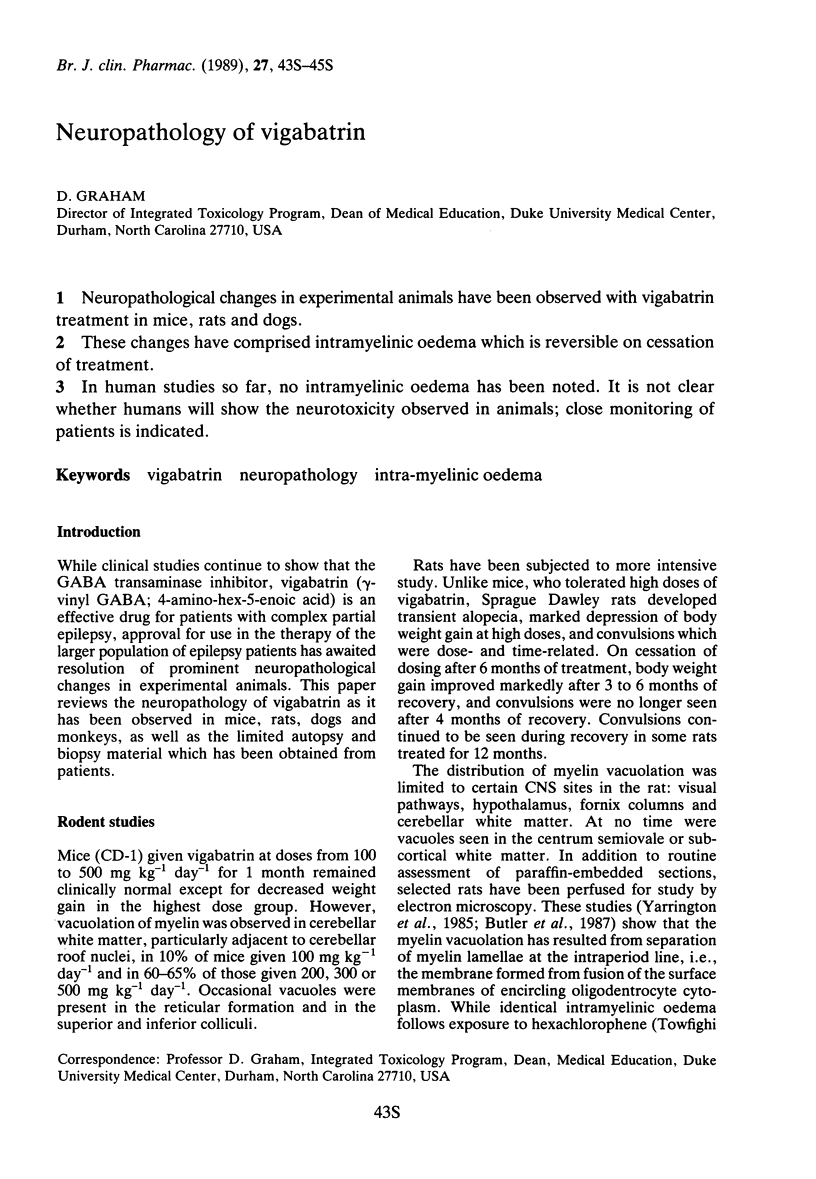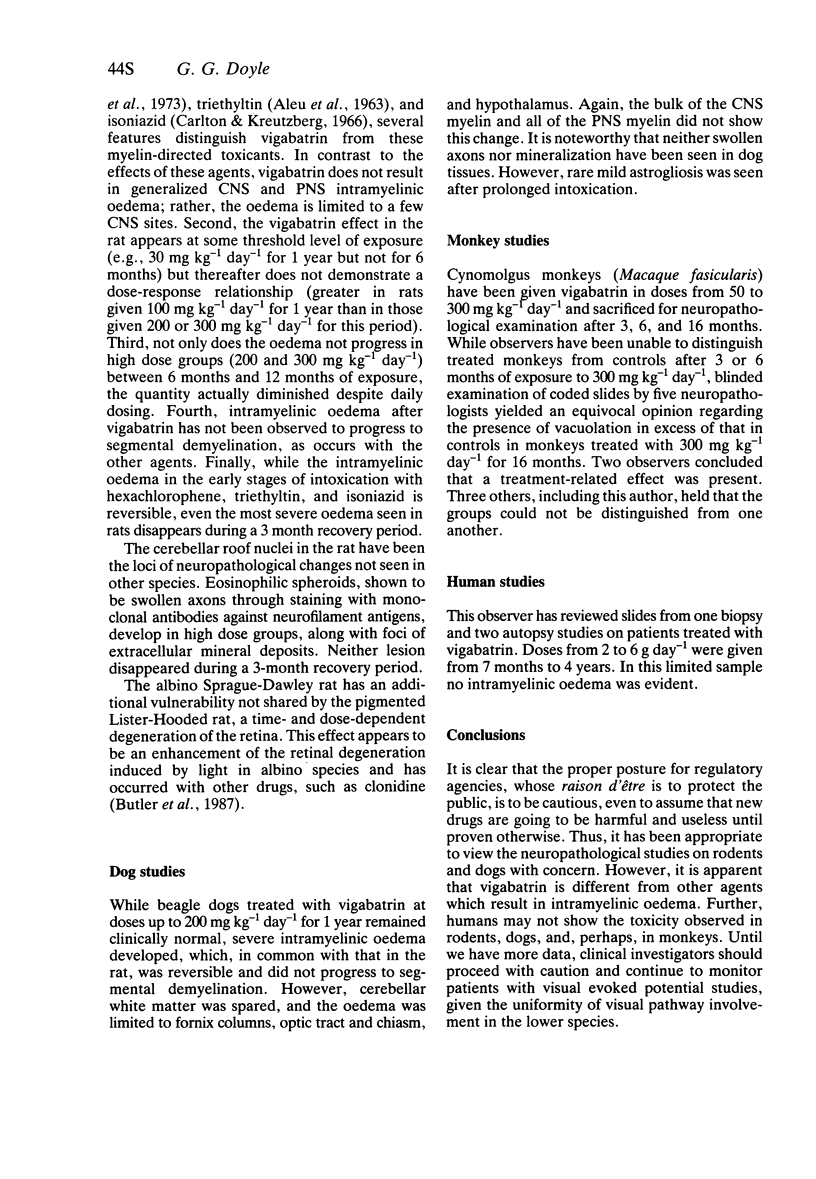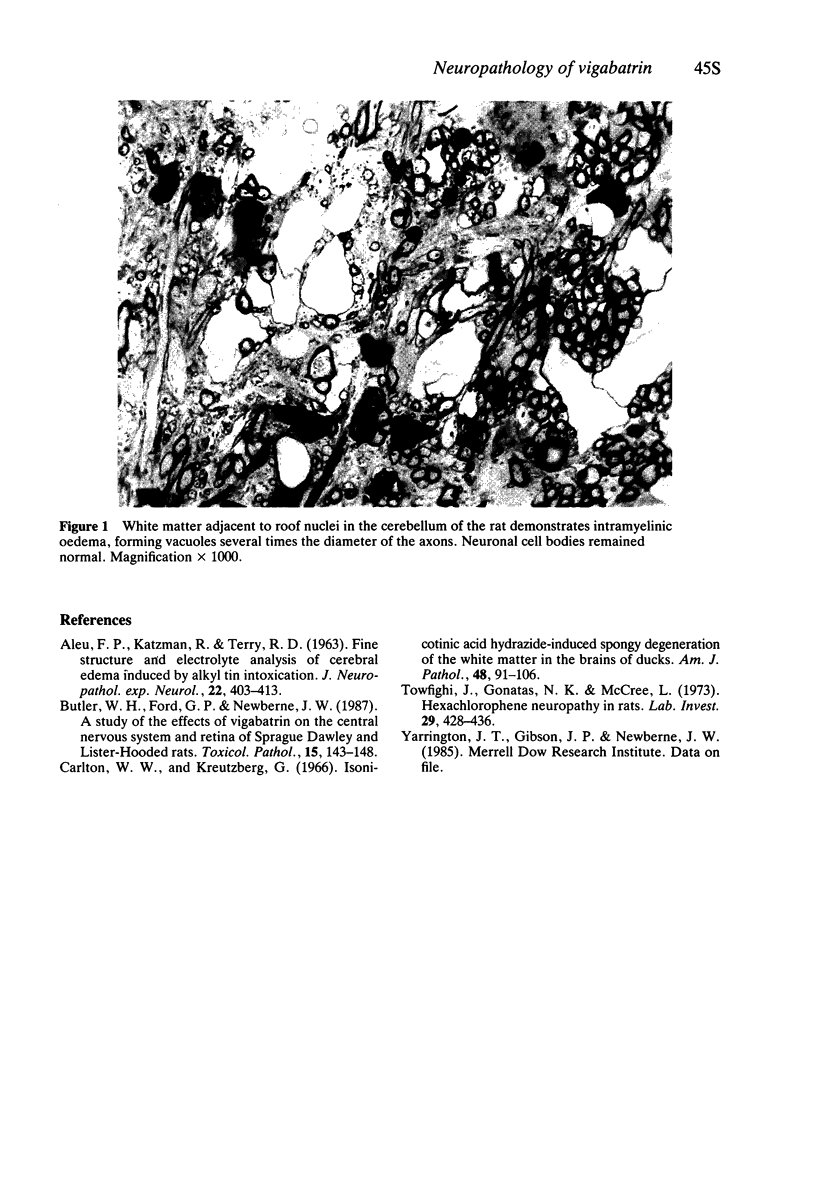Abstract
1 Neuropathological changes in experimental animals have been observed with vigabatrin treatment in mice, rats and dogs.
2 These changes have comprised intramyelinic oedema which is reversible on cessation of treatment.
3 In human studies so far, no intramyelinic oedema has been noted. It is not clear whether humans will show the neurotoxicity observed in animals; close monitoring of patients is indicated.
Keywords: vigabatrin, neuropathology, intra-myelinic oedema
Full text
PDF


Images in this article
Selected References
These references are in PubMed. This may not be the complete list of references from this article.
- Aleu F. P., Katzman R., Terry R. D. Fine structure and electrolyte analyses of cerebral edema induced by alkyl tin intoxication. J Neuropathol Exp Neurol. 1963 Jul;22(3):403–413. doi: 10.1097/00005072-196307000-00003. [DOI] [PubMed] [Google Scholar]
- Butler W. H., Ford G. P., Newberne J. W. A study of the effects of vigabatrin on the central nervous system and retina of Sprague Dawley and Lister-Hooded rats. Toxicol Pathol. 1987;15(2):143–148. doi: 10.1177/019262338701500203. [DOI] [PubMed] [Google Scholar]
- Carlton W. W., Kreutzberg G. Isonicotinic acid hydrazide-induced spongy degeneration of the white matter in the brains of Pekin ducks. Am J Pathol. 1966 Jan;48(1):91–105. [PMC free article] [PubMed] [Google Scholar]
- Towfighi J., Gonatas N. K., McCree L. Hexachlorophene neuropathy in rats. Lab Invest. 1973 Oct;29(4):428–436. [PubMed] [Google Scholar]



